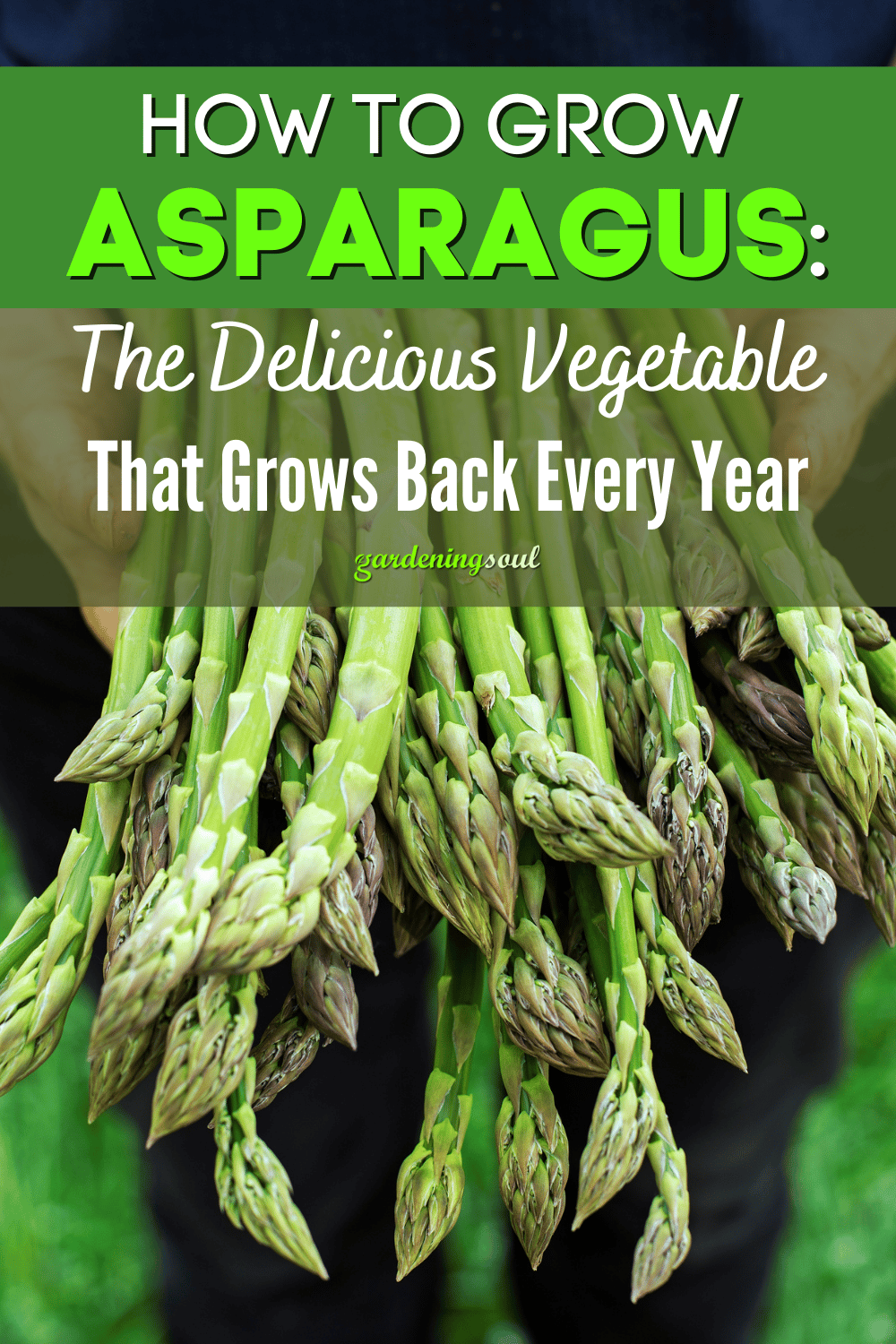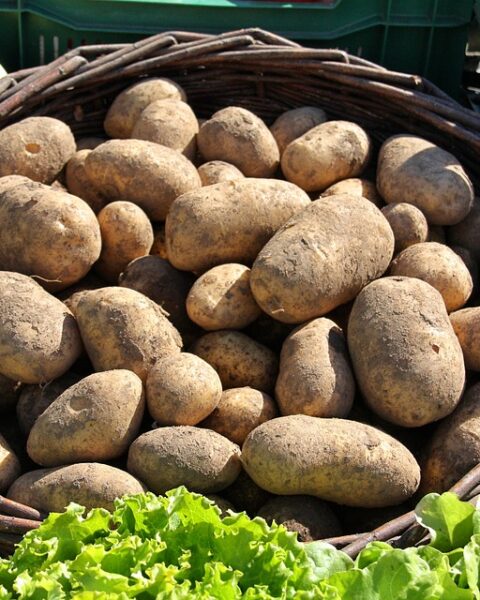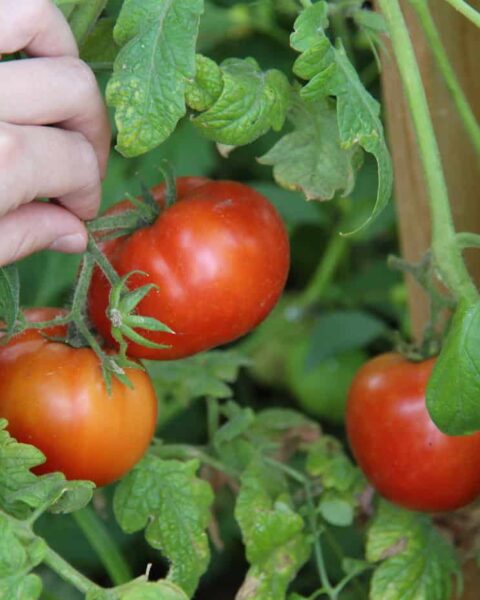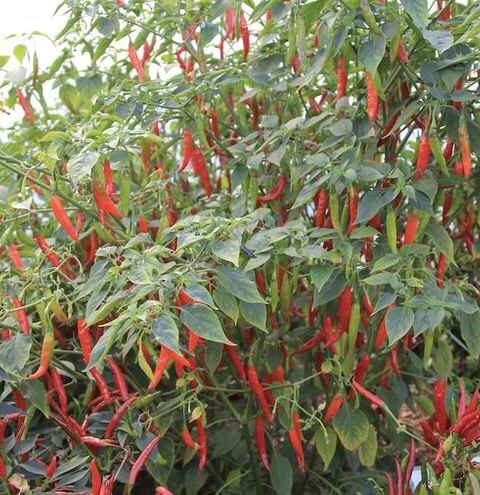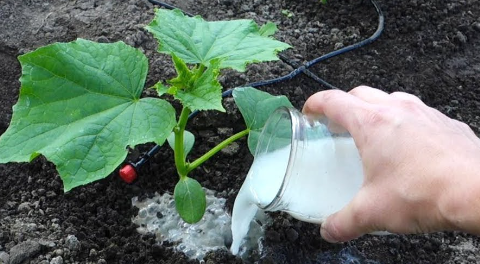What makes growing asparagus particularly appealing is its perennial nature, providing a bountiful harvest year after year.
Asparagus (Asparagus officinalis) is a delectable and nutritious vegetable known for its tender spears and distinct flavor.
What makes growing asparagus particularly appealing is its perennial nature, providing a bountiful harvest year after year.
In this comprehensive guide, we’ll explore the steps to successfully grow asparagus, allowing you to savor this culinary delight fresh from your own garden for seasons to come.
1. Selecting Varieties
Before diving into cultivation, choose a suitable asparagus variety. Common options include Mary Washington, Jersey Giant, and Purple Passion.
Consider factors such as climate, soil conditions, and personal taste preferences when making your selection.
2. Site Selection and Soil Preparation
Asparagus thrives in well-drained, nutrient-rich soil. Choose a sunny location with soil that has a slightly acidic to neutral pH (6.0-7.0).
Prepare the soil by incorporating organic matter, such as compost or well-rotted manure, to enhance fertility and drainage.
3. Planting Asparagus Crowns
Asparagus is typically grown from crowns, which are one-year-old asparagus plants. Plant crowns in early spring as soon as the soil is workable.
Dig trenches 12-18 inches deep and space crowns about 12-18 inches apart within the rows. Cover the crowns with 2 inches of soil initially and gradually fill in the trench as the asparagus grows.
4. Careful Watering
Asparagus requires consistent moisture, especially during its early stages of growth. Provide 1-1.5 inches of water per week, either through rainfall or irrigation.
Avoid waterlogged conditions, as asparagus plants are susceptible to root rot.
5. Mulching and Weed Control
Apply a layer of mulch around asparagus plants to conserve moisture, suppress weeds, and regulate soil temperature.
Keep the area around the plants weed-free, as competition for nutrients and space can hinder asparagus growth.
6. Feeding Asparagus Plants
Fertilize asparagus plants in early spring before spears emerge. Use a balanced fertilizer or a fertilizer specifically formulated for asparagus.
Avoid excessive nitrogen, as it can promote ferny growth at the expense of spear development.
7. Harvesting Asparagus
Resist the temptation to harvest asparagus spears during the first two years to allow the plant to establish a robust root system.
In the third year, begin harvesting when the spears reach 6-8 inches in height. Snap or cut spears just above the soil surface using a sharp knife or scissors.
8. Managing Fern Growth
After the harvest season, allow the remaining spears to grow into fern-like foliage. These ferns are crucial for replenishing the plant’s energy reserves.
Trim back dead foliage in late fall or early winter, leaving a few inches above the soil.
9. Pest and Disease Control
Keep an eye out for common pests like asparagus beetles and aphids. Employ natural predators, such as ladybugs, or use insecticidal soap as a control measure.
Additionally, practice good garden hygiene to prevent disease, ensuring proper air circulation around the plants.
10. Overwintering
Asparagus plants are hardy and can withstand winter temperatures. Mulch the asparagus bed with a layer of straw or leaves to protect the crowns during colder months.
Culinary Uses of Asparagus
1. Fresh and Crisp Asparagus Salad:
Create a refreshing salad with blanched asparagus, cherry tomatoes, feta cheese, and a zesty lemon vinaigrette.
2. Asparagus Risotto:
Incorporate chopped asparagus into a creamy risotto for a delightful and comforting dish.
3. Grilled Asparagus Spears:
Brush asparagus spears with olive oil, sprinkle with salt and pepper, and grill for a flavorful side dish.
4. Asparagus and Parmesan Tart:
Make a savory tart with puff pastry, a layer of cream cheese, sautéed asparagus, and a generous sprinkle of Parmesan.
5. Asparagus Pesto Pasta:
Blend blanched asparagus with basil, garlic, pine nuts, and Parmesan to create a vibrant pesto sauce for pasta.
6. Creamy Asparagus Soup:
Whip up a velvety soup by puréeing cooked asparagus with broth, onions, and a touch of cream.
7. Asparagus and Prosciutto Bundles:
Wrap asparagus spears with prosciutto slices and bake until crispy for an elegant appetizer.
8. Pickled Asparagus:
Preserve the harvest by pickling asparagus with a mixture of vinegar, water, salt, and spices.
Growing asparagus is a rewarding endeavor that yields delicious results year after year.
By providing the right conditions, from well-prepared soil to careful watering and proper care throughout the growing season, you can establish a thriving asparagus bed in your garden.
Embrace the perennial nature of this delightful vegetable, and soon you’ll be enjoying fresh, homegrown asparagus with every spring harvest.
